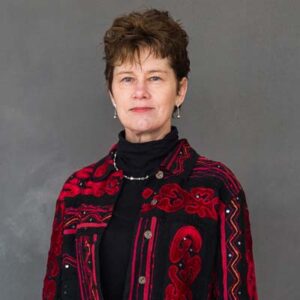Historical Laboratory Projects
Public History – Favino
Public History
This Historical Lab will delve into the methodology of public history. First by exploring what public history means, what it accomplishes, and what ideas it stands for. Second, public history and its origins, where public history came from, and what time period it evolved. Thirdly, expressing some of the problems and controversies that arise with the field of public history. Lastly, this project will highlight one historian named Clarissa Ceglio who has described her work as the methodology of public history, and explain what she has done for the field of public history.
What is Public History?:
Public history gives an understanding of the past to society, and brings the study of history into the everyday person’s life. “The remit for both public history and heritage ranges from protecting sites of national historical importance to creating and disseminating versions of the past for wider public audiences through monuments and memorials, commemorations, museum exhibitions, television programmes and film.”[1] The addition of museums, monuments, national parks, memorials, and commemorations achieves so much accomplishment for the study of history as a whole. Having public places like museums where anyone, even those not studying history thoroughly, can enjoy and learn from the past is vital to society. It is important for people to learn what has happened in the past, and learn from those experiences, and public history provides that easily and makes history simple to understand for anyone. Public history stands for giving the general public knowledge of what has occurred in history. Whether that be through museums, public parks, reenactments, or the countless other ways public history reaches the public.
Origins of Public History:
The presence of public history has been around for centuries in the form of statues, monuments, and historic buildings like cathedrals. However, as expressed in the Houses of History book, “The late twentieth and early twenty-first century has been described as a period of unprecedented interest in remembering the past. In the European context the German cultural critic Andreas Huyssen argued that an ‘obsession with memory’ was clearly evident in the widespread expansion of museums, the building of new memorials and monuments, and the restoration of historic neighborhoods, and in retro fashions, film, and television.”[2] Public history has had a recent growth in the past fifty years. This growth can pinpoint a true origin of the public history we know today in museums and media. Public history is constantly evolving with the current day, on how they present it, and what they are presenting. For example, technology can change the ability of museum exhibits to implement interaction in viewers. Also, time can change what is being shown at a museum. Historically things can become less popular to show in public, or more popular. Perhaps through anniversaries of events, like fifty years after an important event in history.
Controversies of Public History:

Some of the flaws in the public history methodology can be located as well through time and what is presented. Something that may be celebrated at one point, can bring troubled emotions to the public later in time. This semester in class we talked about three instances public history changed for the worse or went too far. One, certain museum exhibitions may be too inappropriate or happen too quickly after a particular event to be right in public history. In class we discussed the controversy over the Enola Gay exhibition. To commemorate the fiftieth anniversary of World War II’s conclusion, the National Air and Space Museum (NASM) created a museum exhibition that would show the Enola Gay. This was a superfortress bomber that dropped the first atomic bomb in history, on Hiroshima in Japan at the end of World War II. This proposed exhibit sparked massive controversy. This exhibit would almost celebrate the usage of the bomb, and disrespect all the deceased innocent humans it caused. Therefore, this exhibit would be canceled, and it shows one of the instances public history could show something inappropriate enough to be viewed by the public.
Controversies continued:
The other two controversies in public history discussed in class are similar in time period and subject matter. One of them is controversy surrounding exhibits that show the public slavery depictions. Whether that be what African American slaves looked like, or how they were treated. This will always be surrounded by the controversy of whether or not this should be shown to people for education or if it is too much for the general public to view. The second controversy is very topical to this time period. The public viewing of Confederate army generals or figures in the confederacy. Should they be taken down, or are they a symbol of southern public history? Within the past few years, many of these statues have been taken down, on the argument these statues celebrate men who stood for slavery. On the other hand, for many these symbolize men who fought for state’s rights, and their own causes. Furthermore, this symbolizes southern American history.
Historian highlight:

Public history, although sometimes controversial, is vital to the general public’s involvement and education in the field of history. One of the historians that specializes in the methodology of public history is Dr. Clarissa Ceglio, who has a Ph. D. in American Studies. Ceglio is a University of Connecticut professor in the department of history. “Much of her research focuses on the affective and rhetorical roles that artifacts—material, visual, and digital—play in constructing national and social imaginaries within the context of museum work. Her book, A Cultural Arsenal for Democracy: The World War II Work of U.S. Museums traces how, from the 1930s through to the immediate post-war years, the fledgling ideal of the museum as a “social instrument” active in current affairs led to new modes of storytelling through exhibition craft.”[3] Ceglio’s book, her work for museums, and her teaching of students are all important to the field of public history. For example, her book that focuses on World War II exhibitions in museums teaches the public about all the exhibitions and how those museums taught the public about the war.
In conclusion, this historical lab discussed the methodology of public history. Firstly by exploring what public history means, what it accomplishes, and what ideas it stands for. Secondly, public history and its origins in the late twentieth and twenty-first century. Thirdly, expressing the problems and famous controversies that arise with the field of public history. Lastly, this project highlighted historian Dr. Clarissa Ceglio who has described her work as the methodology of public history, and explained how her contribution to the field of public history through museums affected the methodology.
- Green, Anna; Troup, Kathleen. The Houses of History. Manchester University Press, 2016. Second Edition. Page 417 ↵
- Green, Anna; Troup, Kathleen. Page 415. ↵
- Lauren Ciulla, “Clarissa Ceglio: Digital Media & Design,” Digital Media Design, April 14, 2020, https://dmd.uconn.edu/person/clarissa-ceglio/#:~:text=As%20a%20U.S.%20cultural%20historian,public%20history%2C%20and%20digital%20humanities. ↵
